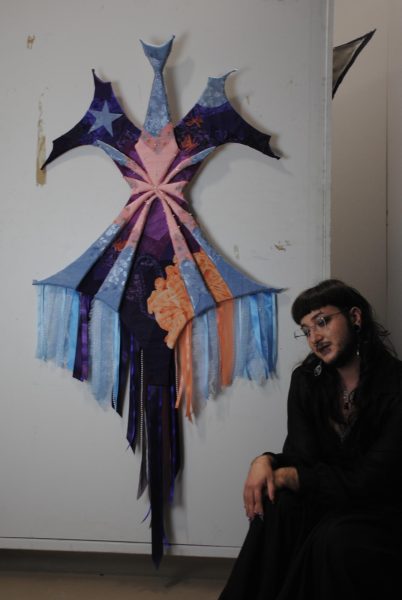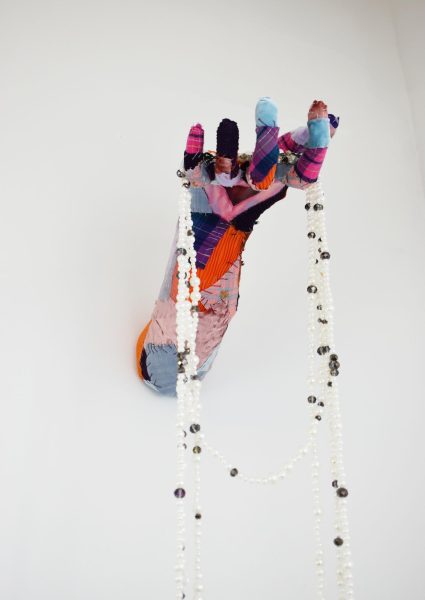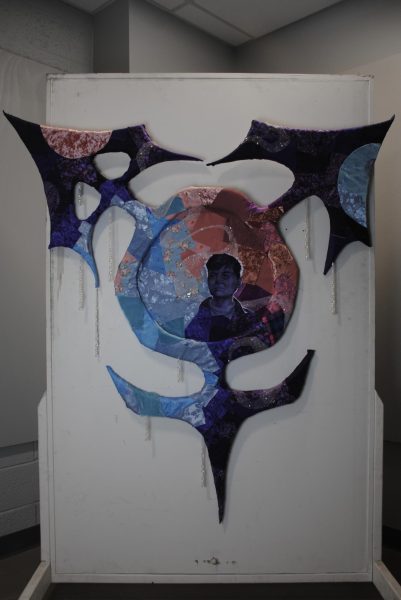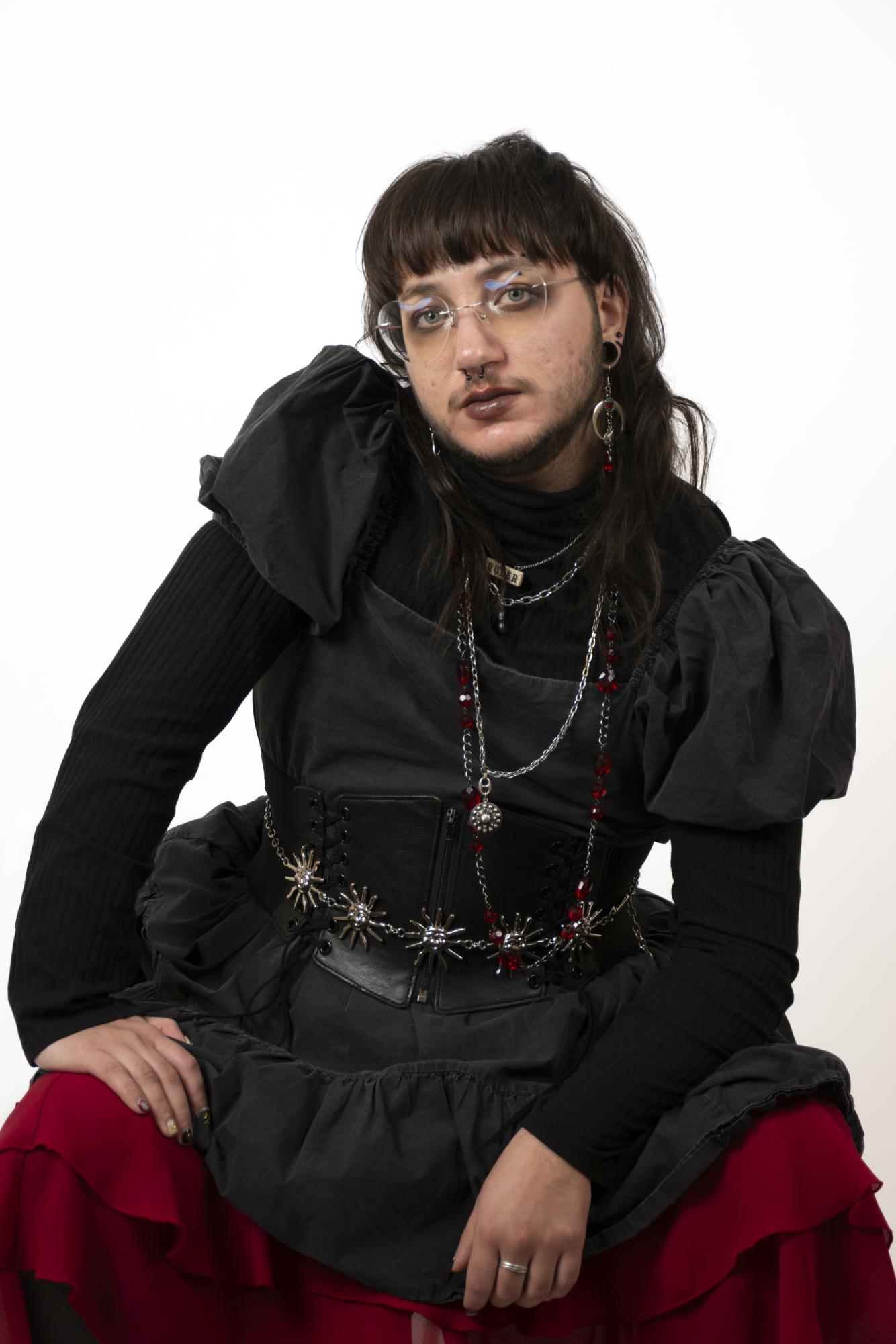Carefully chosen fabric is woven together through textiles, fiber and paint as one artist works to debut their solo show, packing a crucial message.
Toni Martinez, a senior studio art major, debuted their solo art show, “Sewing Lavender,” at 3rd Place on Oct. 3 from 5-8 p.m. The show will be available to view in Wey Hall room 201 from Oct. 20-24.
Martinez said the show consists of seven large pieces, all created with fibers and textiles, with painting integrated throughout.
In many cases, the paintings are sewn directly onto the fabric, blending together two artistic mediums which Martinez said reflected their connection between queer people and the craft of fiber art.

“It inspired me thinking about the connection between queer people and craft, and the connection between, like, fiber art specifically in the queer community,” Martinez said. “Whether it’s like drag where you make your own outfits and you’re sewing through that, or whether it’s like the tactility of it and how soft and comforting it can be to, you know, be in a queer space.”
Martinez said the show’s title, “Sewing Lavender,” has multiple meanings and is a play on words regarding LGBTQ+ culture.
“Sewing is sort of a play onto the idea of sewing like with a needle and also sewing as in like putting seeds into the ground,” Martinez said.
They said lavender also has historical symbolism within the LGBTQ+ community.
“It started originally as a derogatory term and then eventually got reclaimed by the queer community as a symbol of strength and community,” Martinez said. “And so I’m sort of, you know, sewing the seeds of community through the work in a subtle way that brings a lot of queers together, in a way that I consider to be somewhat safer from prying eyes.”
Martinez said that this show is innately queer down to its roots, with subtle details, such as color, holding significant meaning. There are six colors throughout, and they are combinations of different LGBTQ+ flags, including the lesbian, trans and gay man’s flag.
“The colors to me are very queer just in their embodiment, but, you know, I also think putting them together in this way makes them even more queer,” Martinez said.
Evie Byers, a senior studio art major, said they were incredibly impressed by Martinez’s work and the attention to detail.

“Every element from the color to the floral fabrics, you know, everything is so pieced together that it really gives the viewer something to pick apart,” Byers said.
Martinez finds art to be so important because it offers a community in and of itself, especially for LGBTQ+ individuals.
“I think through art we’re able to sort of express something that doesn’t fully exist in reality, which is like an otherworldly, magical feeling,” Martinez said. “We’re able to express that feeling of utopia and that feeling of community and joy in a different way that is not always the easiest.”
Byers expanded on this, finding a certain magic in being able to speak silently to artistic viewers.
“When you see people’s work, you get a glimpse into how they see the world and, you know, it’s a way of putting yourself in other people’s shoes,” Byers said. “It’s just really important to be able to speak to other people in a way that doesn’t involve words, and it’s something that they can interpret in a lot of different ways, but you’re not directing them aside from a visual.”
Bugz Gallimore, a senior studio art major, finds that art is a way to make a lasting statement.

Gallimore said they want to convey the struggles the LGBTQ+ community faces through their art and want to create inspiration for LGBTQ+ people to come. This inspiration is what drives them to create.
“I’m going to think of ways to stay true to myself, stay true to the queer community while still, you know, being safe and existing within everything that might be coming for us,” Martinez said.
Martinez said creating a space where queerness was showcased and celebrated was of the utmost importance in this show, especially regarding the political climate of the United States.
“Queer people have been through a lot of sh—ty things in U.S. history and global history. We’ve made it through to where we are right now and we can make it through again,” Martinez said.



